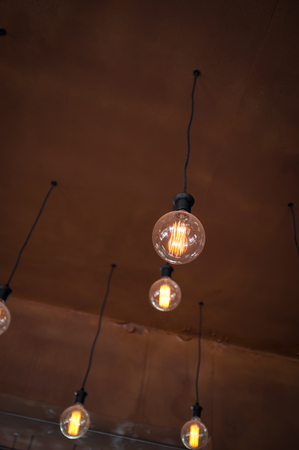Introduction to Smart Lighting Systems
Smart lighting systems are transforming the way American homeowners light up their homes. These innovative solutions combine modern technology with everyday convenience, making it easier than ever to control your homes lighting from anywhere. Whether youre using a smartphone, voice commands, or automated schedules, smart lighting is designed to simplify life and add comfort.
What Are Smart Lighting Systems?
At its core, a smart lighting system replaces traditional light switches and bulbs with connected devices that can be managed remotely. Instead of flipping a switch on the wall, you can use an app or speak to a virtual assistant like Alexa or Google Assistant to turn lights on or off, dim them, or even change their color.
How Do Smart Lighting Systems Work?
Most smart lighting setups use Wi-Fi, Bluetooth, or other wireless technologies to connect light bulbs and switches to your homes network. Once connected, you can:
- Control individual lights or groups of lights from your phone
- Set schedules so lights turn on/off automatically
- Adjust brightness and color for different moods or tasks
- Use sensors for hands-free operation (like motion detection)
- Integrate with other smart home devices for automation
Main Features of Smart Lighting Systems
| Feature | Description | Common Uses |
|---|---|---|
| Remote Control | Manage lights from your phone or tablet, even when away from home. | Turn porch lights on before arriving home at night. |
| Voice Activation | Use voice assistants like Alexa, Google Assistant, or Siri. | “Alexa, turn off the living room lights.” |
| Dimming & Color Control | Adjust brightness and colors easily. | Create ambiance for movie nights or parties. |
| Scheduling & Automation | Program lights to follow daily routines. | Wake up gently with gradually brightening bedroom lights. |
| Energy Efficiency | LED bulbs use less power and last longer. | Save money on electricity bills. |
Why Are Smart Lighting Systems Popular Among American Homeowners?
The popularity of smart lighting in the U.S. keeps growing because these systems offer real advantages:
- Convenience: No more stumbling in the dark—lights can be controlled from anywhere in the house (or even outside it).
- Energy Savings: Automated schedules and efficient LEDs mean less wasted electricity.
- Security: Lights can be programmed to make a home look occupied even when youre away.
- Personalization: Create custom lighting scenes for work, relaxation, entertaining guests, or bedtime routines.
- Easy Integration: Modern smart lighting works well with other smart home tech, such as thermostats and security cameras.
As technology continues to advance and prices become more affordable, its easy to see why so many homeowners across America are making the switch to smart lighting systems.
2. Key Benefits of Smart Lighting for Homeowners
Convenience at Your Fingertips
One of the biggest advantages of smart lighting is how easy it makes controlling your home’s lights. With smart lighting systems, you can use your smartphone, voice assistant (like Alexa or Google Assistant), or even set automatic schedules to turn your lights on or off. No more getting up from bed to switch off the hallway light—you can simply use an app or a quick voice command.
Energy Savings and Lower Bills
Smart lighting helps reduce energy usage by allowing you to set timers, dim lights, and automatically turn off lights in empty rooms. Many smart bulbs are also LED-based, which use much less electricity than traditional bulbs. Over time, these small changes add up and help lower your monthly utility bills.
| Feature | How It Saves Energy |
|---|---|
| Scheduling | Lights turn off when not needed |
| Dimming | Uses less power at lower brightness |
| Motion Detection | Lights only on when someone is present |
| Remote Control | No more accidentally leaving lights on |
Enhanced Security Features
Smart lighting adds an extra layer of security to your home. You can program your lights to mimic your usual routines while you’re away, making it look like someone is home. Some systems even connect with other smart devices—like cameras or motion sensors—to automatically turn on lights if movement is detected outside.
Examples of Smart Lighting Security Options:
- Randomized schedules for a “lived-in” look while on vacation
- Lights that flash if your security alarm goes off
- Outdoor smart lights triggered by motion after dark
Easy Customization for Every Mood and Activity
You can easily adjust color temperature and brightness with smart bulbs, creating just the right atmosphere for any moment—whether it’s movie night, dinner with friends, or bedtime reading. Some systems even let you save presets so you can switch moods with a single tap.
| Activity | Recommended Light Setting |
|---|---|
| Watching TV | Softer, warmer light to reduce glare |
| Dinner Party | Dimmable warm tones for coziness |
| Reading/Studying | Bright, cool white light for focus |
| Relaxing Before Bed | Low, amber light to encourage sleepiness |
Simplifies Daily Living for Everyone in the Home
The flexibility of smart lighting makes life easier for everyone—from kids who forget to turn off their bedroom light, to older adults who appreciate voice controls over hard-to-reach switches. Plus, integration with other smart home devices means your lighting can work alongside thermostats, alarms, and entertainment systems for a truly connected home experience.

3. Top Smart Lighting Brands in the U.S. Market
When it comes to smart lighting systems for American homeowners, several brands stand out for their reliability, innovation, and user-friendly features. Here’s a closer look at some of the leading names you’ll find in the U.S. market:
Philips Hue
Philips Hue is one of the most popular smart lighting brands in the U.S., known for its wide range of products and seamless compatibility with major smart home platforms like Amazon Alexa, Google Assistant, and Apple HomeKit. Philips Hue offers everything from color-changing bulbs to light strips and outdoor lights, giving homeowners plenty of flexibility to customize their spaces. The brand is especially favored for its easy-to-use mobile app and robust ecosystem.
Unique Features:
- Large variety of bulb shapes and styles
- Extensive third-party integration
- Reliable wireless controls via Zigbee or Bluetooth
- Dynamic scenes and routines for mood lighting
LIFX
LIFX is another big name in the U.S. smart lighting scene, offering bulbs that connect directly to Wi-Fi—no hub required. LIFX bulbs are celebrated for their vivid colors, high brightness, and advanced effects such as animated themes and schedules. The setup process is simple, making it a favorite choice for renters or anyone looking for a straightforward upgrade.
Unique Features:
- No separate hub needed (Wi-Fi direct connection)
- Rich color options with millions of shades
- Energy-efficient LED technology
- Smart integrations with IFTTT, Alexa, Google Assistant, and Apple HomeKit
TP-Link Kasa Smart
TP-Link Kasa Smart products are known for being budget-friendly while still offering reliable performance. Their smart bulbs and switches are easy to install and work well with both Amazon Alexa and Google Assistant. TP-Link’s Kasa app allows homeowners to control lights remotely, set schedules, or even simulate occupancy when away from home.
Unique Features:
- Affordable pricing for entry-level users
- User-friendly app with scheduling tools
- Direct Wi-Fi connectivity—no extra hub needed
- Wide range of products including light switches and plugs
Comparing Top Brands at a Glance
| Brand | Main Advantage | Platform Compatibility | Special Feature |
|---|---|---|---|
| Philips Hue | Diverse product range & strong ecosystem | Alexa, Google Assistant, Apple HomeKit | Zigbee/Bluetooth support; dynamic lighting scenes |
| LIFX | No hub required; bright colors & effects | Alexa, Google Assistant, Apple HomeKit | Wi-Fi direct; unique effects & themes |
| TP-Link Kasa Smart | Budget-friendly & easy setup | Alexa, Google Assistant | Simplified scheduling; wide product lineup |
The Bottom Line on Smart Lighting Choices in the U.S.
The right smart lighting brand depends on your priorities—whether you want maximum compatibility, easy installation without extra hubs, or affordable options to get started. Leading brands like Philips Hue, LIFX, and TP-Link Kasa make it easier than ever for American homeowners to enjoy customizable lighting that fits their lifestyle and budget.
4. Best Practices for Installing and Using Smart Lighting
Choosing the Right Smart Lighting System
When selecting a smart lighting system, homeowners should consider compatibility with their existing home setup, preferred control methods, and budget. Here’s a quick comparison of popular smart lighting options:
| Brand | Works With | Main Features | Price Range |
|---|---|---|---|
| Philips Hue | Amazon Alexa, Google Assistant, Apple HomeKit | Wide color range, easy installation, strong app support | $$$ |
| LIFX | Amazon Alexa, Google Assistant, Apple HomeKit | No hub required, bright bulbs, advanced effects | $$$ |
| Kasa Smart (TP-Link) | Amazon Alexa, Google Assistant | Affordable, simple setup, good reliability | $–$$ |
| Sengled | Amazon Alexa, Google Assistant | Budget-friendly, hub optional for some models | $–$$ |
Setting Up Your Smart Lights: Step-by-Step Advice
- Check Compatibility: Make sure your chosen bulbs or fixtures work with your home’s Wi-Fi network and your preferred voice assistant.
- Install Bulbs or Fixtures: Replace standard bulbs with smart ones or install new smart fixtures. Most simply screw in like regular bulbs.
- Download the App: Use the brand’s official app to connect the bulbs to your home Wi-Fi and configure settings.
- Add to Voice Assistant: Link your lights to Alexa, Google Assistant, or Apple HomeKit through the respective apps for hands-free control.
- Name Your Lights: Give each bulb or group an easy-to-remember name (like “Living Room Lamp”) for simple voice commands.
- Create Scenes and Schedules: Set up custom scenes (like “Movie Night” or “Wake Up”) and schedules for automated lighting based on your routine.
- Explore Advanced Features: Try features like color changing, dimming, and vacation mode for added convenience and security.
Optimizing Your Smart Lighting Experience
Integration with Smart Home Platforms & Voice Assistants
- Avoid Mixing Incompatible Brands: Stick to one ecosystem (e.g., all Philips Hue) or confirm cross-brand compatibility if mixing brands.
- Centrally Control Everything: Use platforms like Amazon Alexa or Google Home to manage all your lights from one place.
- Create Routines: Automate routines such as turning off all lights at bedtime or gradually brightening lights in the morning.
- User Accounts & Permissions: Share access with family members so everyone can control the lights from their devices.
- Troubleshooting Tips:
| Issue | Solution |
|---|---|
| Bulb not responding | Check Wi-Fi connection and ensure bulb is powered on; reset if needed. |
| Laggy controls via app/voice assistant | Move Wi-Fi router closer or use a mesh system for better coverage. |
| Error linking to voice assistant | Update both apps and firmware; relink device following in-app instructions. |
Extra Tips for Everyday Use
- Avoid putting smart bulbs on traditional dimmer switches—they can cause flickering or damage the bulb.
- If you want wall switch control, look into smart switches compatible with your bulbs or choose smart bulbs that remember their last setting after power is restored.
- Sensitivity to internet outages? Consider systems that offer local control even if Wi-Fi goes down.
The right setup can make your smart lighting reliable and enjoyable—while saving energy and adding convenience to everyday life!
5. Common Challenges and Troubleshooting Tips
Smart lighting systems can transform your home, but like any technology, they sometimes come with hiccups. Here’s a rundown of common issues American homeowners face, plus simple troubleshooting tips and resources to help you out.
Connectivity Problems
Many smart lights rely on Wi-Fi or Bluetooth. If your bulbs aren’t responding, it could be a signal issue. Check the following:
| Problem | Possible Cause | Solution |
|---|---|---|
| Lights won’t connect to app | Poor Wi-Fi signal | Move your router closer or add a Wi-Fi extender |
| Intermittent connection | Too many devices on network | Limit connected devices or upgrade router bandwidth |
| No response from voice assistant | App permissions or software bug | Restart app/device and check for updates |
Compatibility Issues
Not all smart bulbs work with every hub, voice assistant, or smartphone. Double-check that your chosen brand supports your devices (Amazon Alexa, Google Home, Apple HomeKit, etc.). Here’s how to avoid headaches:
- Check Labels: Look for “Works with Alexa” or “Compatible with Google Home” before you buy.
- Update Firmware: Keep your lighting system and smart home hub updated for best results.
- Use Bridge Devices: If direct compatibility is missing, a bridge (like Philips Hue Bridge) can help connect different brands.
Security Concerns
Your smart lights connect to the internet—so security matters! Here’s what you can do:
- Create Strong Passwords: Always change default passwords on apps and routers.
- Enable Two-Factor Authentication: Many smart lighting apps offer this extra layer of protection.
- Secure Your Network: Use WPA3 encryption if available, and don’t share your Wi-Fi password widely.
- Regular Updates: Apply firmware and app updates promptly to patch vulnerabilities.
Troubleshooting Resources for U.S. Homeowners
- Google Nest Support Center
- Amazon Alexa Help & Customer Service
- Apple HomeKit Support
- Philips Hue Support & FAQs
- Consumer Reports: Smart Home Guide
If All Else Fails…
If your problem persists, reach out to the manufacturer’s customer support. Most leading brands in the U.S., like Philips Hue, LIFX, and TP-Link Kasa, have dedicated helplines and online chat options. Sometimes a factory reset (check instructions in the app) can solve stubborn glitches too.


